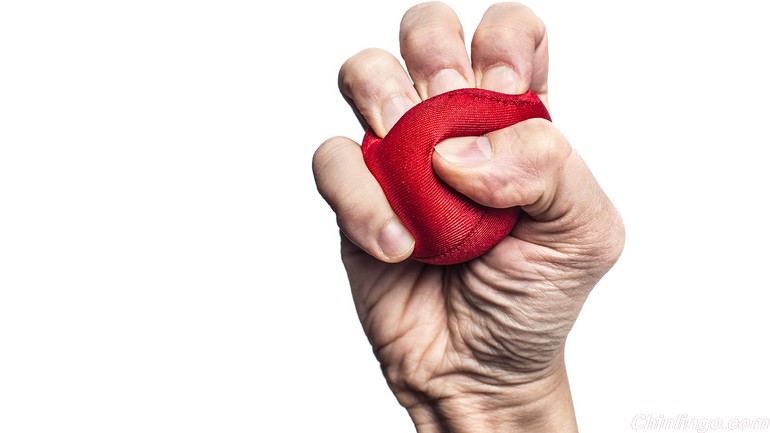
What does the 把 (bǎ) construction look like?
There are two things about 把 (bǎ) that make it especially tricky for language learners. One is that it has no equivalent in English grammar. The other is that it completely changes the order of the sentence.
When you use 把 (bǎ), you have to remember to put your object before the verb. Since English speakers just don't plan their sentences that way, it takes some getting used to.
As a fairly simple example, take the following sentence.
她把饺子吃掉了。(Tā bǎ jiǎozi chī diào le.) "She ate up the dumplings."
This follows the basic order of a 把 (bǎ) sentence:
Subject (她 tā "she") + 把 (bǎ) + Object (饺子jiǎozi "dumplings") + Verb (吃掉了chī diào le "ate up")
Note that I didn't choose such a complicated verb just to show off my mad grammar skills—we'll come back to this in a bit.
Why do I have to learn the 把 (bǎ) construction?
You mean besides the fact that you want to learn to speak Chinese like a native, right?
There are a lot of sentences in Chinese that sound a little better, a little more natural, if you use 把 (bǎ), but if you don't feel like making your brain hurt, you can get by without it.
That said, Chinese has at least one common verb where you just can't use normal English word order: 放 (fàng) "put" requires you to use 把 (bǎ).
Here's an example:
我把书放在桌子上。(Wǒ bǎ shū fàng zài zhuōzi shàng.) "I put the book on the table."
What is the 把 (bǎ) construction good for?
Now that you know what a 把 (bǎ) sentence looks like, and you're convinced (I hope) that you won't be able to ignore it forever, we'll look more carefully at when and why you might want to use 把 (bǎ).
First, the word itself—the clever Chinese student might note the hand radical in the word 把 (bǎ). Use this as a mnemonic—把 (bǎ) sentences are often used in situations where you could say, figuratively at least, "The subject took the object and did something to it." (This is, in fact, the likely historical source of the 把 (bǎ) construction.)
Remember our original sentence?
她把饺子吃掉了。(Tā bǎ jiǎozi chī diào le.) "She ate up the dumplings."
You could express roughly the same meaning by saying "She took the dumplings and ate them up."
How can I make a habit of using the 把 (bǎ) construction?
Knowing how to put a sentence together grammatically is important, but it won't get you any further than an A on an exam unless you can remember to use the grammar when the time is right. We'll wrap up our post with some ideas to help you practice so that you can make that happen.
Walk yourself through your daily routine using 把 (bǎ)
As you get ready in the morning, there are all sorts of things you do to something else. Try talking your way through your routine in Chinese (and if you don't live alone, consider keeping the conversation in your head!)
我把脸洗干净了。(Wǒ bǎ liǎn xǐ gānjìng.) "I washed my face clean."
我把鸡蛋煎好了。(Wǒ bǎ jīdàn jiān hǎole.) "I finished frying the eggs."
我把钥匙放在口袋里。(Wǒ bǎ yàoshi fàng zài kǒudài lǐ.) "I put my keys in my pocket."
Practice with a language partner
把 (bǎ) sentences work nicely with imperatives, or ordering someone to do things. Have your language partner boss you around for a while, while you get up and carry out the actions.
把灯打开。(Bǎ dēng dǎkāi.) "Turn on the light."
把笔放在椅子上。(Bǎ bǐ fàng zài yǐzi shàng.) "Put your pen on the chair."
把碗擦好。(Bǎ wǎn cā hǎo.) "Wipe the dishes." (Ok, maybe not.)
Tell a story—with feeling!
Chinese speakers don't just use 把 (bǎ) sentences at random—they have a reason. And one of those reasons is to make a conversation sound more dramatic. (There's a whole book about this, by Zhuo Jing-Schmidt, should you be looking for a very long diversion from your studies.)
So think of something exciting that happened recently. And then think about how you could tell a simple version in Chinese—with a 把 (bǎ) sentence:
昨天我去商城。(Zuótiān wǒ qù shāngchéng.) "I was going into the mall yesterday."
有人碰了我一下。(Yǒurén pèngle wǒ yīxià.) "Someone bumped into me."
我转眼看。(Wǒ zhuǎnyǎn kàn.) "I turned and looked."
小偷把我的钱包偷走了。(Xiǎotōur bǎ wǒ de qiánbāo tōu zǒu le.) "A thief had stolen my purse!"
These tips should get you well on your way to a good understanding of 把 (bǎ). But if you still find 把 (bǎ) a little confusing, don't worry. You're in good company. Chinese syntacticians (people who study Chinese grammar for a living—and yes, they do exist) have written pages upon pages about 把 (bǎ). And they still can't even agree about what part of speech it is.
Fortunately for us, though, you can use 把 (bǎ) perfectly without ever having an answer to that question.



 闽公网安备 35020302035673号
闽公网安备 35020302035673号
0 responses on "How to use "把" in Chinese"